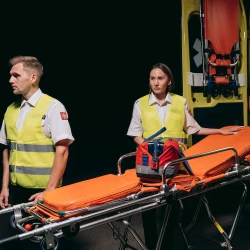In the realm of emergency medical services (EMS), clear and concise communication is pivotal. From the scene of an incident to the emergency room doors, an EMT's ability to quickly and accurately convey information can be the difference between life and death. At the heart of this communication is medical terminology: a standardized language understood by healthcare professionals globally. In this article, we delve into the importance of medical terminology in EMT training and highlight some of the essential terms every EMT should be familiar with.
1. The Crucial Role of Medical Terminology in EMT Training
Medical terminology acts as the bridge between the EMTs on the field and the healthcare personnel in medical facilities. Its importance is manifold:
-
Standardization: It offers a standardized language, ensuring that terms are consistently understood regardless of the region or facility.
-
Precision: Specific terms allow for a clear understanding of the patient's condition, ensuring accurate treatment.
-
Efficiency: Using precise terms expedites communication, vital in emergency scenarios where time is of the essence.
2. Anatomy of Medical Terminology
Medical terminology often comprises three central components:
-
Root: Represents the primary meaning of the word (e.g., 'cardi' refers to the heart).
-
Prefix: Added to the beginning of a word to modify its meaning (e.g., 'brady' means slow).
-
Suffix: Added to the end of a word to change its meaning (e.g., '-itis' indicates inflammation).
For instance, 'bradycardia' means a slow heart rate, where 'brady-' is the prefix, 'cardi' is the root, and '-ia' is the suffix.
3. Essential Medical Terminologies in EMT Training
While EMTs must be familiar with a plethora of terms, below are some fundamental medical terminologies divided into categories:
Anatomical Terms:
-
Anterior (Ventral): Front side of the body.
-
Posterior (Dorsal): Back side of the body.
-
Lateral: Away from the midline of the body.
-
Medial: Towards the midline of the body.
-
Proximal: Closer to the point of attachment.
-
Distal: Further from the point of attachment.
Common Conditions and Signs:
-
Dyspnea: Difficulty breathing.
-
Tachypnea: Rapid breathing.
-
Hypertension: High blood pressure.
-
Hypotension: Low blood pressure.
-
Hyperglycemia: High blood sugar.
-
Hypoglycemia: Low blood sugar.
Injury and Assessment Terms:
-
Hemorrhage: Excessive bleeding.
-
Fracture: Broken bone.
-
Contusion: A bruise or injury without an open wound.
-
Abrasions: Scrape of the skin surface.
-
Puncture: A wound made by a sharp object.
-
Laceration: A cut, often irregular.
Cardiac Terms:
-
Myocardial infarction (MI): Commonly referred to as a heart attack.
-
Cardiac arrest: Complete stopping of heart activity.
-
Arrhythmia: Irregular heart rhythm.
Respiratory Terms:
-
Apnea: Absence of breathing.
-
Asphyxia: Suffocation due to lack of oxygen.
-
Bronchitis: Inflammation of the bronchi in the lungs.
-
Pulmonary edema: Fluid in the lungs.
Neurological Terms:
-
Cerebrovascular accident (CVA): Often known as a stroke.
-
Seizure: Sudden, uncontrolled electrical disturbance in the brain.
-
Concussion: Temporary unconsciousness caused by a blow to the head.
4. Emphasizing Pronunciation and Spelling
It's essential to stress that understanding a term isn't enough; correct pronunciation and spelling are equally vital. Mispronouncing or misspelling a term could lead to misunderstandings and potential misdiagnosis.
5. The Continuous Evolution of Medical Terminology
Medical language is ever-evolving. New diseases, medical techniques, and technologies bring along new terms. As such, continuous learning and updating one's terminology knowledge are critical for EMTs.
Conclusion
In the fast-paced world of emergency medical care, the language of medicine serves as both an anchor and a compass. Medical terminology, with its structured, precise nature, allows EMTs to swiftly and accurately share critical patient information. As they transition from the scene of an incident to the hospital's emergency room, this language ensures continuity of care. For students undergoing EMT training, mastering medical terminology isn't just about passing exams – it's about being prepared to save lives in the most challenging situations.





